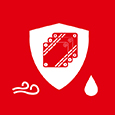
Improved energy efficiency and reduction in material and manufacturing costs are becoming important for the part which consumes electrical energy – i.e. the motor. AC motors are now replaced with permanent magnet rotors and BLDC (brushless DC motors). However conventional methods available for fixing ferrite, alnico and neodymium iron boron permanent magnets used in electric motors, small engines, speakers, transformers and other devices do not impart sufficient strength, slow down productivity and increase overall weight and cost of the machine.

Limitations with conventionally used methods:
In comparison with clips and springs –
- Produce localized stresses
- High overall cost per manufactured part
- Loud vibration needs to be dampened with sound absorbing paints
- Assembly cannot be automated
- Leave air gaps leading to vibration, noise, corrosion, and chipping of magnets
In comparison with locally available magnet bonding adhesives:
- Low overall strength leads failure in drop tests
- High cure times slows down production
- Mostly available as two-part epoxies that need mixing leading to wastage
-

Ability to use lower cost components
-

Decreased inventory cost
-

Will not chip magnets
-
Prevent vibrational noise
-
Prevent corrosion
-
Higher impact strength
-

Higher temperature resistance
-

Ability to accelerate cure times increasing productivity
-

Easier to automate
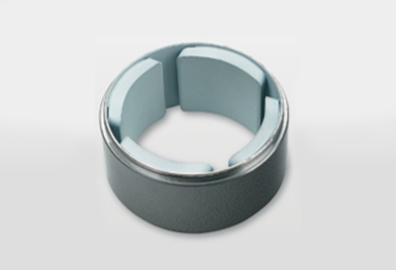
Bonding magnets to rotor in electric motor
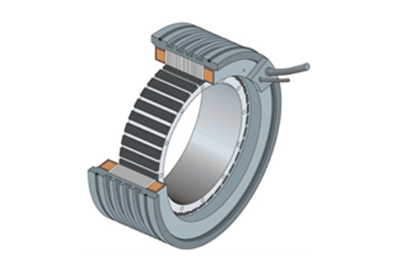
Bonding magnets to stator in an electric motor
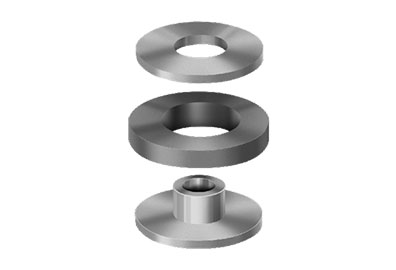
Bonding magnets in loudspeakers
Case Studies
Increasing the reliability of your assemblies
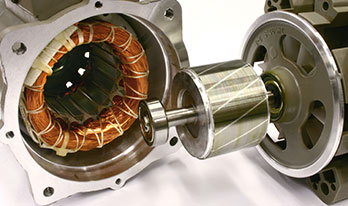
A motor manufacturer was able to increase the reliability of his devices by 2X by replacing clips with LOCTITE to bond magnets
Know MoreIncreasing the output of your production line
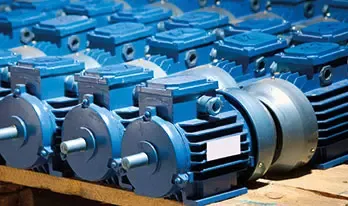
A motor manufacturer was able to increase his production efficiency by 40% by switching to LOCTITE for magnet bonding
Know More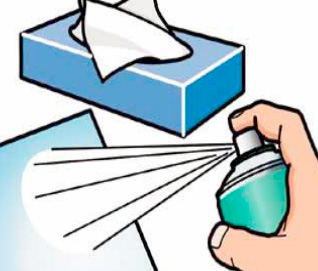
Step 1
Clean the part where magnet needs to be fixed
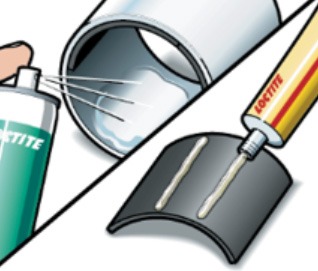
Step 2
Apply LOCTITE 7075 on this cleaner part. Allow the solvent to evaporate. Dispense LOCTITE AA 324 on this part and place the magnets in position

Step 3
Allow the magnets to fixture
Looking to improve the reliability of your assemblies?
Learn how LOCTITE Structural Bonding solutions can help you in achieving reliable results with maximum strength.
Looking for professional advice?
Talk to our expert for first-hand information for achieving reliable results with LOCTITE Structural Bonding solutions.
We have been using welding for our structural requirement. Will structural adhesives be able to achieve the right strength?
LOCTITE structural adhesives have been proven to be able to take almost as much load as overlap welding and that too at only half the cost. LOCTITE adhesive also offer other advantages like making the process simple, and providing sealing along with bonding.
We use adhesive tapes. It is not messy. Wouldn’t using LOCTITE adhesives increase the process time and cost?
While double sided adhesive tapes are not messy, their application process is definitely very long and complicated – what with the need to cut to specific dimensions and expensive activators. LOCTITE adhesives are mostly applied through static mixers that ensures precise application without any mess.
We are using polypropylene and we have tried to use multiple methods and adhesives before, but they didn’t work. Which LOCTITE adhesives would be suitable?
There are many suitable LOCTITE structural adhesives based on acrylic, epoxy, modified silane and hybrid technologies that would be ideal for bonding polypropylene. Drop a query to our LOCTITE experts with the specifics of the application requirement and they will be able to recommend the right solution.
Replacing rivets is out of question – if we use adhesives, it will take longer to bond but with rivets we would be able to assemble instantly.
Rivets offer the advantage of instant assembly, however result into concerns of reliability because of uneven stress concentrate points that become fatigue and failure points and also lead to corrosion. Instead, LOCTITE structural adhesives offer better reliability and come in various cure types which can be further accelerated with the help of activators.
Can LOCTITE products withstand loads under extreme humidity and temperature conditions?
Yes, LOCTITE structural adhesives have been designed to withstand heavy loads under various ambient conditions. Especially, LOCTITE structural adhesives based on modified silane technology which cure in the presence of humidity, are excellent for outside applications where high temperature, UV resistance etc. features are preferred.
Which LOCTITE structural adhesives can bond rubber to metal?
LOCTITE structural adhesives based on acrylic, epoxy, modified silane technology and hybrids are excellent for bonding rubber to metal. Drop a query to our LOCTITE experts with the specifics of the application requirement and they will be able to recommend the right solution.
Is it possible to bond glass to glass or glass to metal with LOCTITE adhesives?
Yes, bonding dissimilar substrates like glass to metal or even glass to glass is possible with LOCTITE adhesives. If optical clarity and aesthetics is a must, choose clear epoxies like LOCTITE E-30 CL. Otherwise LOCTITE acrylics are also a great choice for bonding glass to metal or glass to glass. Prefer modified silanes if glass has to be fixed to a metallic frame. Drop a query to our LOCTITE experts with the specifics of the application requirement and they will be able to recommend the right solution.
Is any surface preparation needed before applying LOCTITE structural adhesives?
Removal of dirt, dust or other surface impurities from the surfaces to be bonded is important before adhesive application as they can interfere with the effectiveness of the bond strength. This can be achieved through either degreasing or abrasion. Chemical treatments like primers, corona discharge, flame and plasma treatments can also be used to modify the surface properties to further enhance bond strength.
What is meant by open time/working time/pot life of an adhesive?
Open time is the time within which parts should be assembled post application of the adhesive to ensure proper surface wetting and achieve maximum strength.
What does on part life of adhesive signify?
This term is relevant for adhesives where activator is used on one of the parts. On-part life is the time within which activator or primer provides full performance.
What is the difference between fixture time and full cure time?
Fixture time of an adhesive is the time needed to achieve enough strength to hold the parts together without additional support or to achieve lap shear strength of 0.1 N/mm2 whereas full cure time of an adhesive is the time needed to achieve full performance.
What is a hybrid adhesive?
Combination of two different adhesive technologies, which are normally stand-alone technologies and at the outset cannot be manually mixed. A Hybrid combines the positive attributes of both technologies which provides new performance parameter. LOCTITE Hybrid adhesives combine the speed of cyanoacrylates (commonly known as instant adhesives) with the strength of epoxies/acrylates to give universal that can bond anything in seconds providing high strength.
Sorry, this can not be processed now.
 Product Recommender
Product Recommender  Value Calculator
Value Calculator  Track Order
Track Order
 Offers
Offers  1800 123 1922
1800 123 1922 





















































 Maintenance
of Pumps
Maintenance
of Pumps
 Maintenance
of Electric
Motor
Maintenance
of Electric
Motor
 Maintenance
of Gearbox
Maintenance
of Gearbox
 Maintenance
of Compressor
Maintenance
of Compressor

